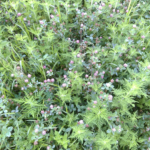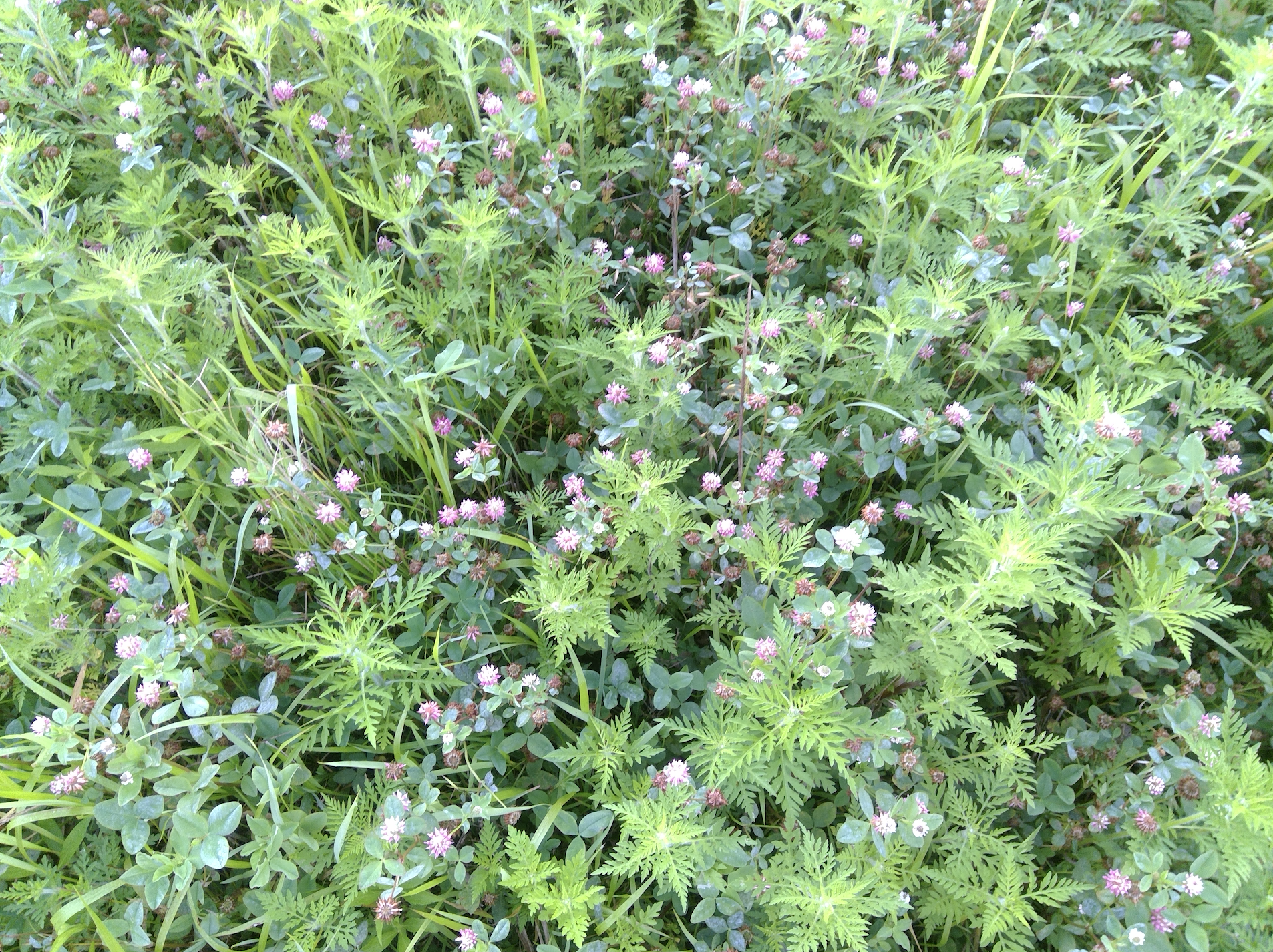By Gabe Ross, Farm Manager

With our many cover crops planted last Fall and this Spring here at Gallant Farm I figured I would give an update and some thoughts on one. Last fall we planted one field with a mix of oats, rye, and crimson clover. These were seeds we had around, so I mixed up and planted them. Oats usually don’t survive the winter, and this held true for this mixture, but the crimson clover and rye persisted. Once the rye started to form seed heads and the crimson clover had pretty much finished flowering, I mowed the cover crop down. This field was slated to become a hay field and I had planned to plant alfalfa into the cover crop with a no till drill earlier in the Spring but wasn’t able to due to rain and timing of the drill rental. Luckily for me, there seems to be a large seed bank of alsike clover here, and after the cover crop was mowed this came up thick. While alsike clover has drawbacks compared to alfalfa and the other clovers it is the clover that grows the best on poorly drained soils like ours and is similar in feeding value to white clover.
One of the drawbacks of alsike clover is that it lodges, or falls over, making it hard to cut for hay. Considering this I took the opportunity to use it as green chop, which means cutting a little every day and feeding it green as a supplement to pasture for the sheep and sometimes cows. The only weed that came up in much quantity in this field was ragweed. While ragweed is abhorred by allergy sufferers, including myself, it is quite nutritious for livestock when it is young, having similar protein content to alfalfa. Many weeds are highly nutritious and often grow better during drought than planted hay crops. This can be important going into the dry time of year like late Summer and early Fall. But will they eat it? That’s the real question. In my experience they do, especially when it is young, and I’ve seen it in hay that fed out nicely. This particular green chop was fed and eaten with pretty much no waste. If we cut it before seeding we should keep it from going too crazy. Overall we’ll take it without complaining too much.






